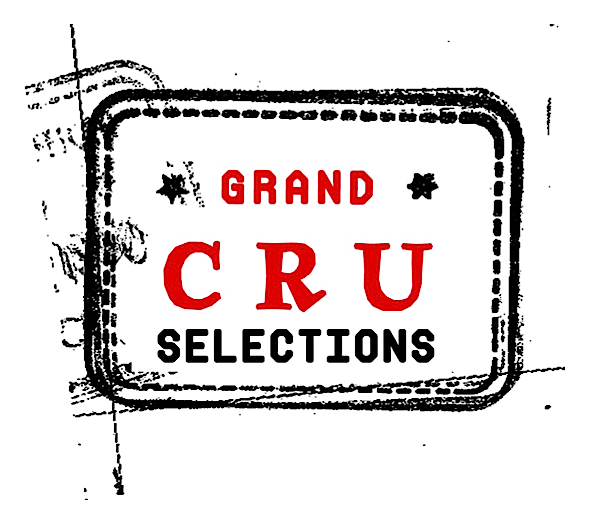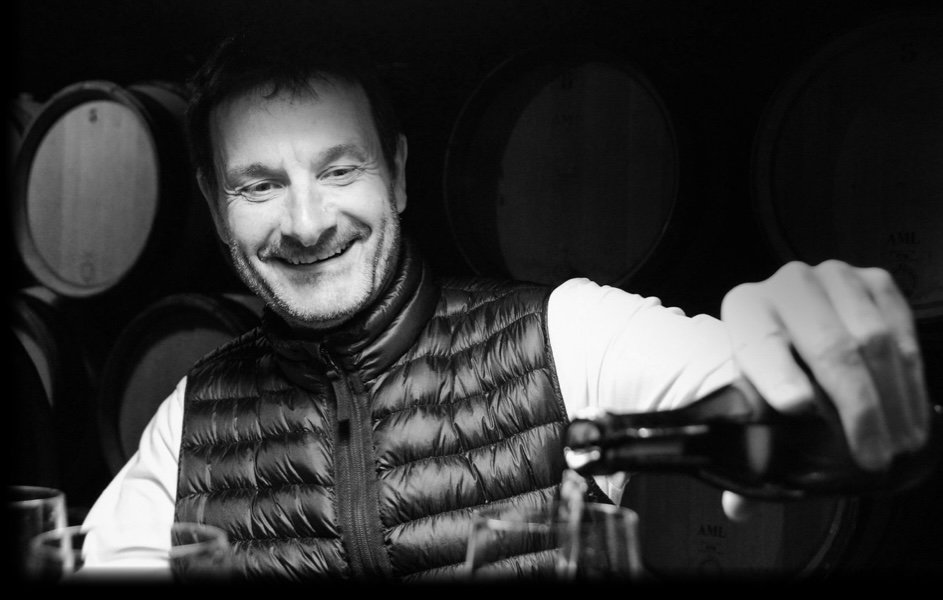domaine Roulot
Meursault, Côte de Beaune, France
Jean-Marc Roulot
Domaine Roulot has always been among the best producers of Chardonnay in Burgundy. Under the guidance of Jean-Marc Roulot, the domaine is now amongst the few whose wines are always sold out even before they are in bottle. Jean Marc's wines have the same precision and energy as the individual. Like the man, they are full of spirit and intensity.
-
Domaine Roulot is an old family estate based in Meursault since 1820. It was Guy Roulot, Michele and Jean-Marc’s father, who raised this estate to the level of excellence that we know today. His marriage to Geneviève Coche, following his achievements in adding additional prime parcels to the family’s holdings put the estate in the spotlight. A generation before, the domaine was more adept at distilling their grapes rather than vinifying. As a result, Domaine Roulot has become the master of the lieu-dit, not to mention the five premier cru parcels they farm in Meursault and Monthelie. Guy’s sudden death in 1982 left the family in transition, with Ted Lemon, an American who stepped up as cellar master before returning to California to found Littorai estate.
Jean-Marc Roulot returned to the estate in 1989, putting his acting career in Paris on pause. Since his return to Meursault, Jean-Marc kept increasing the domain’s holdings through mix of vineyards purchase and fermage contracts.
-
-
Since the early 1990s Jean-Marc set the domaine on the course to organic farming. Ever since, no herbicides are being used and only plowing is used, while all treatments are managed to minimize any effect on the vineyards’ natural microbial life. The age of the vines is relatively high due to major replanting done by Jean-Marc’s dad, Guy in the 1950s.
Jean-Marc believes in early and short pruning to avoid the need for green pruning in later stage of the growing season. His goal is to deliver perfect fruit and would rather pick a day or two earlier than two days late.
-
Jean-Marc’s believes in making wines that he would like to drink rather than making wines that will appeal to modern palates. The elevage is relatively long of around 18 months, while the wines are being racked into stainless steel tanks after a year. Aging on lees for one year in barrels and six months in vats using only natural yeasts reduces any need of batonnage. Austere and “on the razor's edge” in their youth, the wines take on tremendous scale with age. The result is that the entire range of wines has good line of energy through their core, with silky texture, purity and transparency of its terroir.
The amount of new oak used ranges from 10 to 30%, depending on the character of the wine and the vintage. Roulot is not a strong advocate of lees stirring, a popular technique in Meursault to gain richness. He tells author Clive Coates, “It does, I admit, create richness, but it also creates heaviness, and one loses purity.” Jean-Marc therefore stirs a maximum of six times, only in years of high acidity and never after the malolactic fermentation.
Wines
Bourgogne Blanc
Surface area: 2.64 hectares Average vine age: 35 years Hand harvested, pneumatic pressing, natural yeast fermentation and 11 month elevage in a mix of barrel and steel tank, followed by 7 months in tank. Fined with tiny amounts of caseine and bentonite, very lightly filtered before bottling. Sulfur is adjusted to 20mg/L free during elevage to 30mg/L free at bottling. The fruit comes from the lieux-dits of Durots, Dressoles, Malpoiriers, Herbeux, Veaux, Sous le Chemin, and Grandes Coutures.
Auxey-Duresses Blanc
Surface area: 0.48 hectares Average vine age: 60 years Roulot's Auxey-Duresses parcels are located north of Vireuils & Tessons, where the slope turns from east-facing to north-facing. While the cooler micro-climate makes the Auxey-Duresses slightly more austere than the Meursaults, the difference is not as great as the different appellation would make it seem. Vinification: Auxey-Duresses and the Meursaults all have the same vinification + elevage. Hand harvested, pneumatic pressing, natural yeast fermentation and 11-12 months elevage in barrel, followed by 6-7 months in tank. Fined with tiny amounts of caseine and bentonite, very lightly filtered before bottling. Sulfur is adjusted to 20mg/L free during elevage to 30mg/L free at bottling.
Meursault Villages
The majority of the grapes come from Clos de la Baronne, east of Les Gouttes d’Or. In addition are blends of vines from the heavier clay soils of the southern plots of Les Vireuils, Les Gruyaches, Les Crotots and les Sous la Velle. A generous, sappy and persistent Meursault that can be enjoyed straight away.
Meursault Meix Chavaux
“Meix” is a small house, while “Chavaux” is a contraction of “chef val” which means “head of the valley” and the vines are, in fact, the first heading uphill in the valley. At the base of the slope, at 250m altitude, the soils are deep, which makes the wines aromatic and more opulent - more soil driven, rather than mineral. This vineyard site lies to the north of the village’s premier crus but at the same elevation. A portion of this limestone-rich vineyard are over 90 years old.
Meursault Vireuils
Vireuils is one of the highest vineyards on the north slope of the village of Meursault, facing slightly east. Saline and mouth-watering, this is a perfect wine to start a meal.
Meursault Luchets
Les Luchets is near and dear to Jean-Marc, coming from a plot located at an altitude of 280 meters. The limestone soil gives it a beautiful minerality, but also a lot of roundness and a magnificent length.
Meursault Tillets
0.49 hectare plot located highest on the slope and facing south-east, this site has very little topsoil over stony white marl soils and is beloved for its searing minerality.
Meursault Tessons "Clos de Mon Plaisir"
50+ year old vines from 0.85 hectare.Situated just north of the 1er Crus, a quintessential Meursault from the heart of the appellation. More powerful than Tillets, with a nose of dried citrus, bark and spices.
Meursault 1er Cru Porusot
0.42 hectare plot on the mid-slope “sweet spot” of the swathe of 1er crus in Meursault, lying on shallow, stony soils that offer wonderful texture and elegance.
Meursault 1er Cru Clos des Bouchères Monopole
Les Boucheres is a relatively small cru, totaling around 4.41 ha under vines, and Jean-Marc’s Clos des Bouchères is walled off slice of this cru, about 1.38 hectares in total, planted in 1950 and 1980. Jean-Marc acquired this Clos in 2011. Its shallow, stony soils lie over oolitic limestone laced with marl and clamshells, adding distinct salinity to the wine. Bouchères is all length on the palate; intense, elegant and refined.
Meursault 1er Cru Perrières
The Meursault 1er cru Les Perrieres, purchased by the Roulots in 1976, which vines were planted in the 1940s is the jewel in the crown of Roulot’s holdings but unfortunately made in minute quantity. 0.26 hectare plot | a highly regarded site that has relatively shallow soils with a higher dose of clay than most, over deap limestone subsoil. This beautiful plot lies on the border of Puligny Montrachet, above Charmes, an ideal mid-slope vineyard site which allows for a perfect balance between richness and raciness.
Monthelie 1er Cru Les Champs Fuillot
30+ year old vines from 0.19 hectare.

